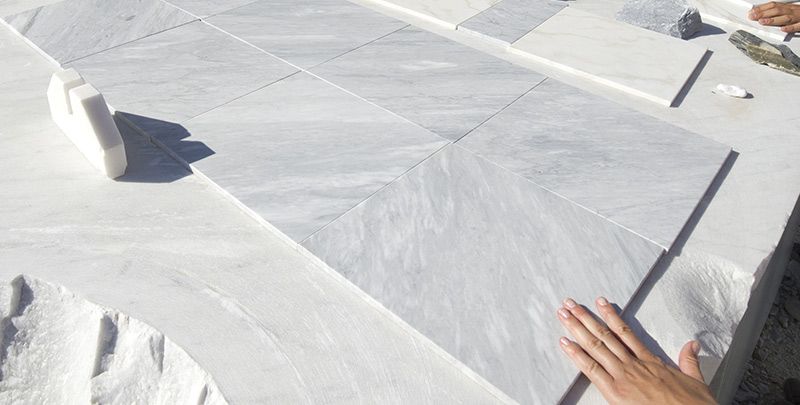Information
Learn more about tiles
Learn more about tiles
Here you'll find all the information you need about tiles. This includes the types of tiles, why people choose them, the available tile sizes, and the terms commonly used in the tile industry. See the information on these topics below, per heading. Do you have another question about tiles or need advice? Feel free to contact us.
Tile terms
The world of tiles uses a lot of technical terms, which many people find unintelligible. We're happy to explain these terms to you. Below, we've provided a brief explanation of each term.
Rectified: When a tile is rectified, the edges are cut straight. This allows for a tighter joint. The abbreviation "Rett." is also sometimes used to indicate a rectified tile.
Tumbled: When a tile is tumbled, it looks used or aged because the edges are not straight. This look is achieved by the manufacturer. Cutting Loss: During gluing and cutting, some waste can occur, such as leftover pieces when cutting to size, and a tile can break during gluing. Therefore, it's always advisable to factor in cutting loss. Typically, the amount of loss is between 10-20% of the total surface area. The tile size plays a significant role in this.
White/red chipping. A glazed tile has a top layer on the chipping. This chipping can be two colors: white and red. With white wall tiles, it's important to pay attention to the chipping color. The disadvantage of choosing a white wall tile with red chipping is that the red color can show through when grouting. This isn't the case with tiles with white chipping!
Tile types
There are many different types of tiles. However, tiles can be easily divided into two categories:
- Natural stone tiles
- Ceramic tiles
These tiles can then be divided into, for example, slate or marble for the natural stone tiles, and wood-look or concrete-look tiles for the ceramic tiles.
Natural stone tile
Natural stone tiles are mined from natural quarries and then cut to size by the manufacturer. Natural stone tiles are ideal for creating a unique and luxurious look in your home. You'll never find two identical tiles because they're naturally quarried, and they last a lifetime. Natural stone tiles are more expensive than ceramic tiles, both for the price of the product and the installation cost. We recommend that you don't install natural stone tiles yourself, but rather have it done by a specialized tiler.
Ceramic tile
Earth is baked at temperatures of 1000 to 1250 degrees Celsius, creating a ceramic tile. These ceramic tiles are known as the most durable and user-friendly of all types of tiles and other flooring. To make the tile more durable, minerals are added. The tile is also given a glaze that makes it water-resistant. Very practical, yet also decorative.








